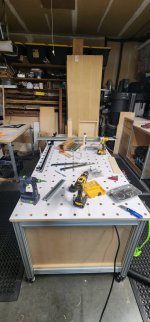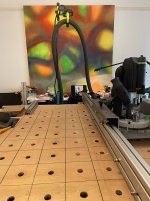Paulhoward
Member
- Joined
- Jul 22, 2020
- Messages
- 6
I have the parf guide system mk 1 and 2 and I have made several mft table tops. I never questioned the accuracy of the system until I purchased the 600 mm parf fence last year. I noticed that the fence dogs wouldn't fit in every position in the mft top, so I questioned the fence. I have since taken the parf 20 mm fixture and matched it to the parf fence perfectly matched holes. I have now questioned the accuracy of my use of the parf system. I have read the manual and watched Peter's YouTube videos over and over, but the new mft tops were off on some holes about 1/2 mm. Any advice from someone else that uses the system would be helpful. Thanks



